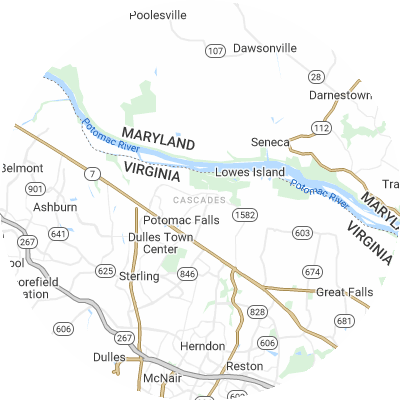Signs You May Need Gutter Guards
While gutter guards aren't always necessary, signs of obstructed gutters are clear. Issues stemming from persistent gutter problems include:
- Soggy ground or visible erosion patterns around your house's foundation
- Frequent clogs that lead to overflow and water spilling over gutters
- Leaky seams or joints where water leaks out of gutters
- Mold growth, interior wall stains, or peeling exterior paint on walls near gutters.
- Visibly saggy, damaged, or misaligned gutters that no longer correctly direct rainwater
How To Choose a Gutter Guard Installer
Assess Their Experience
Look for an experienced gutter guard installation provider that has been in business for multiple years and has installed a wide variety of guard types and models. These companies know how to properly take measurements and handle the installation of gutter guards on your unique home setup. Ask how long they’ve been in business and request local referrals.
Verify Proper Licensing and Insurance
When speaking with potential installation companies, always confirm that they are licensed, bonded, and insured with both workers compensation and general liability policies. This protects you if any injuries or accidents happen. Request current licensing and insurance papers from potential providers.
Choose Reputable Brands
Look for installers that carry tenured trusted gutter guard brands such as LeafFilter and Gutter Helmet. Steer clear of companies that only offer their own off-brand products or generic no-name guards. These lesser-known products may not have the same level of rigorous testing as major brands.
Seek Custom Fit Services
For superior performance, gutter guards need to be sized and cut on-site to match your unique gutter setup. Select a company that uniquely sizes and cuts guards specifically for your home, rather than using one-size-fits-all guards. Properly fitted guards will leave no gaps for debris to get stuck.
Examine Warranties
High-quality gutter guard installers typically offer 20-year or lifetime warranties covering clogs, rust, leaks, and other issues. Before choosing a company, carefully read through the warranty terms for workmanship and materials guarantees. Warranties are the most effective way to protect your gutter investment.
Check Reviews and Referrals
Be sure to check online reviews on Google Reviews, Yelp, the Better Business Bureau (BBB), and other review sites to find customer feedback. Ask neighbors which companies they recommend for quality local gutter guard installation. When researching, look for providers with consistently good feedback rather than only one or two sporadic reviews.
Types of Gutter Guards
The six primary gutter guard types are as follows:
- Foam guards consist of pieces of foam that sit in your gutters to stop debris. They're light and easy to install. On average, you can expect to pay $2.46 per linear foot for foam guards.
- Brush guards are made of large brush bristles that sit inside your gutters, stopping debris and allowing water to pass through. On average, you can expect to spend $4.04 per linear foot for brush guards.
- Screen guards have large holes that allow water to pass through while stopping debris. On average, you can expect to pay $4.33 per linear foot for screen guards.
- Mesh guards have smaller holes than screen guards and similarly stop debris while letting water flow through. They are durable and allow debris to slide off rather than sit on your gutters. On average, you can expect to pay $4.09 per linear foot for mesh guards.
- Micro-mesh guards are generally the most effective. They have smaller holes than regular mesh guards and let even less debris through. On average, you can expect to spend $5.17 per linear foot for micro-mesh guards.
- Surface tension guards, also called reverse curve guards, use surface tension to let water flow into your gutters while debris slides off. Typically, they can be seen from the ground. On average, you can expect to pay $3.19 per linear foot for surface tension guards.













